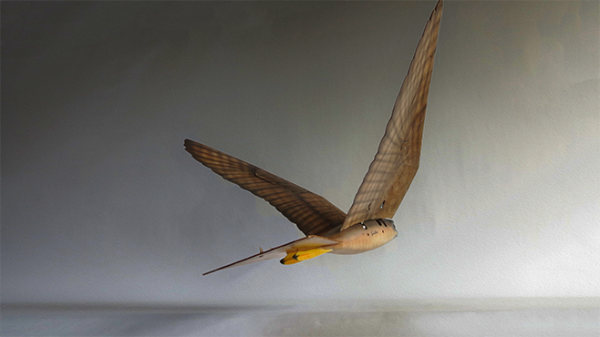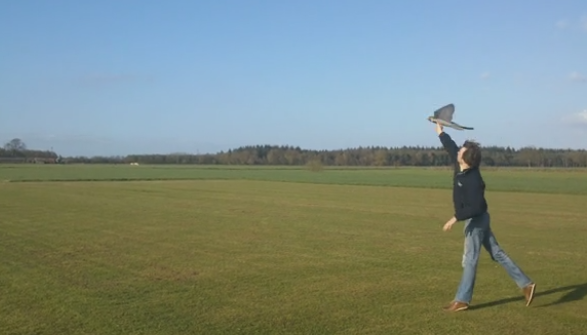Yes, it’s true — birds can be great creatures to look at, but for those who work in aviation, waste management, or agriculture birds can be a very tough problem to deal with. Birds are not only a nuisance in these industries, but can also be a serious threat to safety in aviation.
 Robird prototype. (Image via Clear Flight Solutions)
Robird prototype. (Image via Clear Flight Solutions)
So we don’t use scarecrows to deter birds anymore, but 27-year-old Nico Nijenhuis from the Netherlands has designed Robirds — robotic hawks that can scare away other flying predators.
His newly created company called Clear Flight Solutions will develop these robotic predators for aviation and waste management industries.
Nijenhuis is currently testing remote-controlled peregrine falcons and eagles and hopes to have fully autonomous robotic birds on deck by the end of the year.
Nijenhuis got started with robotic birds when he was trying to come up with an idea for his master’s thesis at the Technical University of Twente in the Netherlands. His advisor handed him a mechanical bird and told him to figure out how it works and how he could make it better.
 Test flight of the Falcon model. (Image via Clear Flight Solutions)
Test flight of the Falcon model. (Image via Clear Flight Solutions)
Unfortunately, creating robotic birds isn’t quite as simple as it may sound. There are still so many mysteries about how birds fly that create challenges.
According to Nijenhuis, in order to trigger birds’ flight instinct, a silhouette and wing movement is needed. The Robird needs to look and act like a predator in order for other birds to care.
Because the Robirds trigger the instincts of birds, there is no chance of habituation in the long term. According to the Clear Flight Solutions website, “there are currently no other means available in battling the nuisance of birds that have as high of a success rates as the Robird.”
Advertisement
Learn more about Electronic Products Magazine





